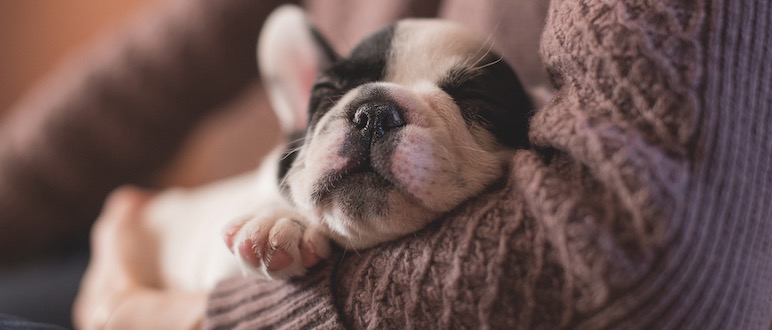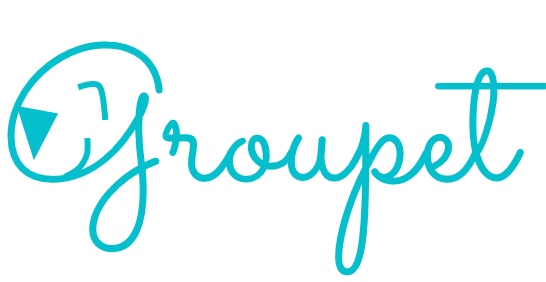
Tips and news
First night and first week of a puppy at home
We open 2020 with a post about the arrival of a puppy at home. We are going to provide a guide so that the arrival of a puppy at home is done in the best possible way, and help you to enjoy the new member of the family to the maximum. The guidelines we give are based on those proposed by Ian Dunbar in the books BEFORE You Get Your Puppy and AFTER You Get Your Puppy.
The arrival of a puppy home is an event of joy and excitement for the family. But for the puppy it is a sudden change and he has to adjust little by little. From the first moment, we have to work to make her feel comfortable in her new home and with her new family.
Before coming home
The first thing is to learn about the care and growth of puppies. There are many online resources that can help you: blogs, YouTube, courses, books… Also, the municipal library may have some books and videos available. Stay away from urban legends and myths about education, and focus on quality information from professionals.
If you have children, it is your responsibility that they interact properly with the puppy. Although it seems obvious, it must be made clear that a dog is not a toy. On many occasions, children interact with pets in a rude way that makes them uncomfortable and makes them feel in danger. Teach your children to interact with dogs in a healthy and positive way.
Learn to read the signs of stress in dogs and teach your children to give the dog the space and freedom that the dog needs. For practice, you can locate a dog that is good with children, and let your children interact with it. They can also attend a puppy training class.
Our recommendation is that young children are not left alone with the dog (puppy or adult) without supervision.
As for the rules of the house, it is good to establish the responsibilities of each member of the family and the rules that the puppy has to follow. Will you be able to get on the sofa? Who will feed him? Where will he sleep?
When training the puppy, all members of the family must use the same words and gestures for commands, so it will be easier and faster for the puppy to understand what you want!
In dogs, the socialization period begins around 3 weeks and lasts up to 12 weeks. Everything we want the puppy to understand, assimilate and learn should happen in this short period of time … Plan conscientiously how you are going to socialize your puppy with the environment, people and other dogs.
Learn about puppy socialization classes. In these classes, your dog will acquire the tools to properly introduce himself and socialize with other dogs. This little gesture has a huge impact throughout your adult life.
Plan when your puppy arrives home. It is preferable to visit and spend time with the puppy while he is with his mother and his siblings so that he can get to know you.
Dogs love routine, and their well-being depends on it. In the first weeks of life, a puppy’s routine is: sleep, relieve himself, eat and play with his siblings. But at home his routine will be different, and he has to get used to it as soon as possible. When the puppy comes home you should have:
- Toys that you can put food in
- Fences to delimit a space where you can be unsupervised
- Soakers
- Dog Urine Cleaner
- Carrier with bed
- Food (the best indicated by the vet)
- A blanket that you used in his old house, or something that smells like his mother and brothers
- A sack of feed of the same type and brand as the one you eat in your old home
In order for the puppy to learn to relax by himself, he will only eat from toys filled with food. Although later, you can feed him from your hand and strengthen your bond.
Finally, take advantage of it and take a few days off to be with your puppy for his first days at home. Preferably one week.
Arrival home
Upon arrival home, we will introduce the puppy to his new home. But first, take him to the area that you have enabled for him to relieve himself.
It is good to let him investigate and do the environment and the family little by little. You have to give him space and not overwhelm him with hugs, caresses, etc.
Wait for your dog to have all the vaccinations before bathing him, to reduce the risk of catching a cold. In the meantime, you can use wet wipes or sponges.
Avoid having visitors until the second or third week. Above all, if you have visits with dogs, make sure they are properly vaccinated and dewormed. In addition, it is very important that the interactions that your puppy makes with other dogs are positive. Therefore, avoid your dog interacting with reactive or conflicting dogs. Otherwise, when your puppy is an adult, he may not interact properly with other dogs.
Dogs are social animals, so keep in mind that it is normal for the first few days to miss their family. Therefore, it is better that you sleep in a space provided in your room.
Conditioning
Ideally, you should dedicate your efforts so that your dog only adopts good habits. Therefore, with proper training you will teach him to relax being alone, bite only his toys and relieve himself in his “sink”.
A suitable space would be a limited space (living area) where to put:
- Carrier with its bed and toys full of food
- Place to relieve yourself
- Bowl with water
- Chew toys
Dogs instinctively do not relieve themselves where they sleep so they will spend much of their time in their carrier eating from their toys and sleeping.
Once an hour, you will open the carrier to direct him to the sink directly to relieve himself. Ideally, the site for your needs will be in your living area, but in the furthest location. Over time, you can gradually add space between your “sink” and your “bedroom.”

After relieving himself, reward the puppy with food that he likes a lot, some training exercises, play, or take a walk outside his living area. By following this routine, your puppy will learn to discharge in one go. In addition, you can take advantage of this routine to teach him the order to pee and poop.
If after 3 minutes he does not relieve himself, put him back in the carrier and try again 20 minutes later. It is very important that you do not leave your living area with a full bladder.
To avoid separation stress, you can do a simple exercise. Leave him in his living area for about 5-10 minutes without him seeing you (as if you were gone). Then come back and see you. Over time, increase the amount of time the puppy spends without seeing you.
If you are spending time away from home, leave the door of the carrier open but within their living area. With this simple routine, your dog will learn to relax on its own and won’t feel the need to bark.
As the puppy has complete control over his bladder and there have been no “accidents”, you can gradually leave him outside the living area.
Take advantage of the quarantine period to do leash walking exercises at home. This way you will prepare it to go out and follow your walking rhythm without jerking.
Training
In general, the purpose of training is not to control your dog, but to ensure that he leads a healthy and happy life with you. It is always easier to live with a well-trained dog.
A good education is not only important so that your dog knows how to behave on the street. Visits to the vet, groomer, home visits, nail trimming or even physical therapy sessions are vastly easier with well-behaved dogs.
Good training is based on rapport, trust, communication, and mutual understanding of expectations.
Creating a communication channel with your dog requires dedication and time. On the other hand, you will enjoy the relationship that you dedicate to build. The more time you spend together, the better you will understand each other.
Although the bases of learning are universal, a dog is not a child and has to be educated differently. Take time to understand dog behavior and training to better understand your dog.
There are two factors that work in your favor when it comes to training your dog: they love teamwork and routine. For example, if you use the routine to your advantage, you will reduce the learning time to pee and poop, and your puppy will soon learn to hold on to do it in the street.
Training sessions will be of short duration, especially with puppies, as dogs become mentally tired and lose concentration. It is preferable to do several short, well-planned sessions throughout the day.
You can start training with the basic commands from the first week at home. The first commands your dog should learn are to call, sit, lie down, get up, and be still. If you have adopted your dog from a breeder it is possible that he has already taught him some of these commands.
When your dog knows some commands, encourage your visitors to play with him with some obedience session. This will help your dog to socialize better with people.
In summary
Once home, it is important to allow space and time for the puppy to adjust and feel safe in its new home. Set up a space for the puppy where he can relax, eat and relieve himself.
When the puppy is settled at home (after about a week), he begins training with some of the basic commands (his name from him, come to the call, sit, lie down, get up).
We hope you liked it and that it helps you! Happy 2020!









